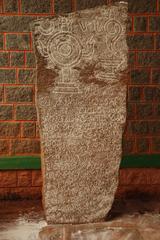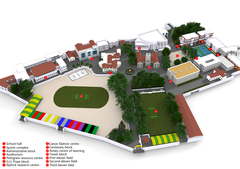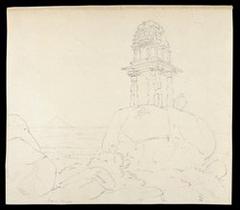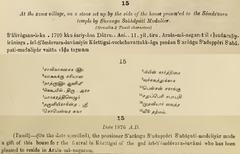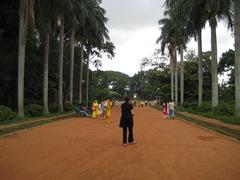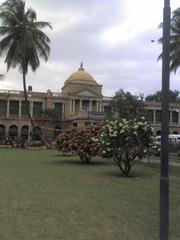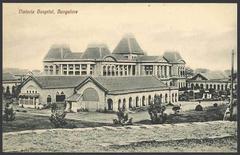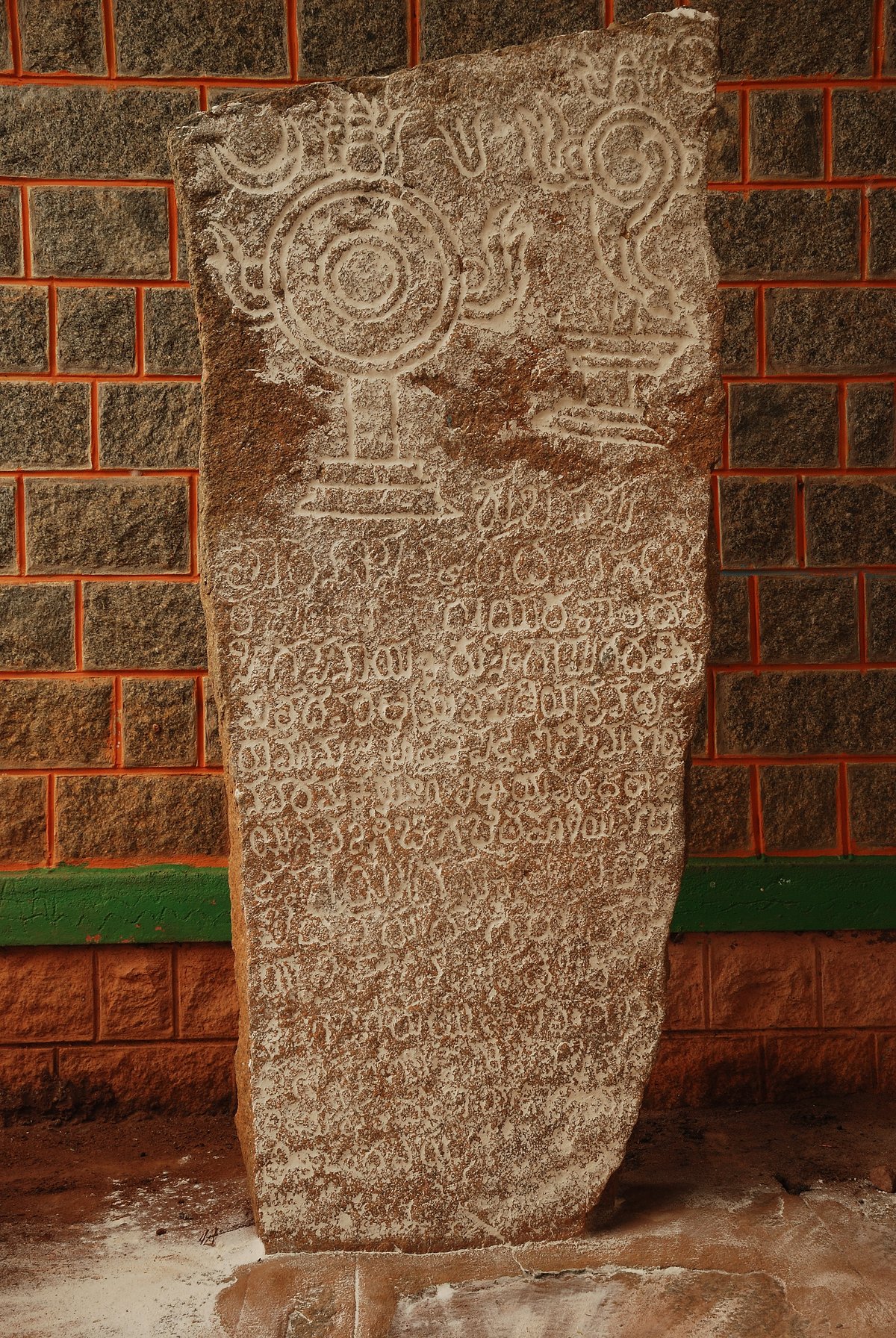
Chikkabettahalli Inscription: Visiting Hours, Tickets, and Guide to Bengaluru’s Historical Sites
Date: 14/06/2025
Introduction
Nestled in the northern neighborhoods of Bengaluru, the Chikkabettahalli Inscription stands as a silent witness to Karnataka’s medieval past. This ancient granite slab, engraved in old Kannada script, offers an invaluable window into the city’s rich linguistic, dynastic, and cultural heritage. While Bengaluru is globally celebrated for its technological prowess, sites like the Chikkabettahalli Inscription remind visitors of the city’s deep-rooted historical narratives, spanning centuries of cultural exchange and local administration (The News Minute; Karnataka Itihasa Academy).
This comprehensive guide covers everything you need to know about visiting the Chikkabettahalli Inscription: historical background, practical visitor details, accessibility tips, nearby attractions, and how community-driven efforts are preserving this piece of Bengaluru’s history.
Table of Contents
- Historical Background
- Visitor Information
- Physical Description
- Historical and Cultural Significance
- Amenities and Practical Tips
- Nearby Attractions
- Community Preservation Efforts
- FAQ
- Conclusion and Call to Action
- References and Further Reading
Historical Background
Epigraphic Landscape of Bengaluru
Bengaluru is home to a remarkable collection of stone inscriptions, representative of more than 30,000 such artifacts across Karnataka—the highest of any Indian state. These inscriptions, in Kannada, Tamil, Telugu, Persian, and English, chronicle the linguistic and dynastic history of the region (The News Minute; Karnataka Itihasa Academy).
Chronology and Dynastic Context
The Chikkabettahalli Inscription dates from between the 10th and 15th centuries CE, likely associated with the Hoysala or Vijayanagara dynasties. Its script and language reflect the evolution of Kannada and the administrative practices of medieval South India (Karnataka.com).
Content and Purpose
Inscriptions of this era typically documented land grants, religious endowments, and significant local events. The Chikkabettahalli stone likely records a land grant or donation to a temple, mentioning donors, beneficiaries, boundaries, and the reasons for the grant (Karnataka Itihasa Academy).
Linguistic and Cultural Significance
The use of old Kannada script underscores the city’s linguistic heritage, while the presence of inscriptions in other languages elsewhere in Bengaluru highlights centuries of cultural exchange. These stones also provide insights into medieval religious practices, community life, and the role of temples as social centers (The News Minute; Karnataka.com).
Visitor Information
Location and Directions
- Site: Anjaneya Swamy Temple, Chikkabettahalli, Bengaluru, PIN 560097
- Neighborhoods Nearby: Ayyappa Layout, Vidyaranyapura, HMT Layout, NTI Layout
- By Bus: BMTC routes 271E, 401-A, 401-E, 401MS, MF-401, MF-401AD stop at Chikkabettahalli Bus Stop (1-minute walk to the temple).
- By Metro: Closest stations are Jalahalli (8.0 km), Goraguntepalya (8.3 km), Peenya Industry (8.9 km); connect via bus or auto-rickshaw.
- By Rail: Chikka Banavara (6.2 km), Lotte Gollahalli (7 km), Yelahanka Junction (7.8 km).
- By Car: Accessible from Hesaraghatta Road, Yelahanka Road, Vidyaranyapura–Nanhangud Road. Limited parking is available near the temple.
Visiting Hours and Entry
- Hours: Daily, typically from 8:00 AM to 6:00 PM (aligned with temple hours)
- Entry Fee: Free (no ticket required)
Accessibility
- The site is at ground level but may have uneven surfaces and steps; wheelchair access is limited. Visitors with mobility challenges should plan for assistance.
Guided Tours and Community Initiatives
- While there are no official tours, local heritage groups such as #InscriptionStonesOfBangalore occasionally organize heritage walks and community events (Reddit #InscriptionStonesOfBangalore).
Photography and Conduct
- Photography is generally permitted but seek permission from temple authorities, especially for interior shots. Dress modestly and maintain decorum within the temple premises.
Physical Description
- Material: Granite
- Dimensions: ~170 cm tall, 74 cm wide, 15–30 cm thick
- Script: Old Kannada, deeply incised, 10–25 horizontal lines
- Motifs: Possible subtle sun, moon, floral, or geometric borders; occasional Shaivite or royal symbols
- Condition: Weathered, with some erosion and lower portions possibly buried or chipped
Granite Chikkabettahalli Inscription stone carved with old Kannada script, located in Bengaluru.
Historical and Cultural Significance
The Chikkabettahalli Inscription is not just an artifact, but a record of dynastic governance, religious endowments, and social organization. It offers scholars and visitors alike a rare glimpse into the day-to-day realities and cultural priorities of medieval Bengaluru. Its preservation is crucial for understanding the evolution of Kannada script and the multicultural nature of the city’s past (Karnataka.com).
Amenities and Practical Tips
- Food & Refreshments: Small eateries and tea stalls are nearby; for a wider range, visit Vidyaranyapura or Yelahanka.
- Accommodation: Budget and mid-range hotels in Yelahanka and Vidyaranyapura; central Bengaluru offers upscale options.
- Healthcare: Facilities like NIKISA Hospital and Recovery Center are in the vicinity.
- Shopping & Essentials: Local markets, grocery stores, ATMs, and petrol pumps are available.
- Best Time to Visit: February–April for pleasant weather; avoid midday heat, and carry sun protection.
Nearby Attractions
- Begur Inscription: One of Karnataka’s oldest Kannada inscriptions
- Chokkanathaswamy Temple, Domlur: Ancient temple with significant epigraphy
- Mallikarjuna Temple, Malleshwaram: Notable for its historical stone inscriptions
- Bangalore Palace, Tipu Sultan’s Summer Palace: Additional heritage sites within city limits
Community Preservation Efforts
The survival of the Chikkabettahalli Inscription is largely due to grassroots efforts. Local residents, supported by the Inscription Stones of Bangalore collective, have mobilized to rediscover, clean, and protect such artifacts. Community engagement has included educational campaigns, guided walks, and the digital documentation of inscriptions to ensure their stories endure (Reddit #InscriptionStonesOfBangalore; Stone Inscriptions of Bangalore, Scribd).
FAQ
Q: Is there an entry fee to visit the Chikkabettahalli Inscription?
A: No, the site is free to access.
Q: What are the visiting hours?
A: Generally from 8:00 AM to 6:00 PM, following temple timings.
Q: Are guided tours available?
A: Occasionally, local heritage groups host guided walks; check online or social media for updates.
Q: How accessible is the site for people with disabilities?
A: The terrain is uneven and not fully wheelchair-accessible; assistance may be needed.
Q: Can I photograph the inscription?
A: Yes, but it is courteous to ask temple authorities for permission.
Q: How do I reach Chikkabettahalli by public transport?
A: Use BMTC buses to Chikkabettahalli Bus Stop or metro/rail to nearby stations, then transfer by auto-rickshaw.
Conclusion and Call to Action
The Chikkabettahalli Inscription is a testament to Bengaluru’s layered history, linguistic diversity, and the enduring spirit of community-driven preservation. As an accessible, free-to-visit heritage site, it invites both locals and tourists to reconnect with the city’s medieval roots. By visiting and sharing your experiences, you become part of an ongoing effort to protect and celebrate Karnataka’s epigraphic legacy.
References and Further Reading
- Bengaluru’s linguistic diversity: What historical inscriptions tell us, The News Minute (The News Minute)
- Karnataka Epigraphy, Karnataka Itihasa Academy (Karnataka Itihasa Academy)
- Kannada Inscriptions of Bangalore, Karnataka.com (Karnataka.com)
- The Incredible Inscription Stones of Bengaluru, Reddit #InscriptionStonesOfBangalore (Reddit #InscriptionStonesOfBangalore)
- Stone Inscriptions of Bangalore, Scribd (Stone Inscriptions of Bangalore, Scribd)
